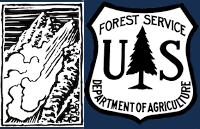Photos
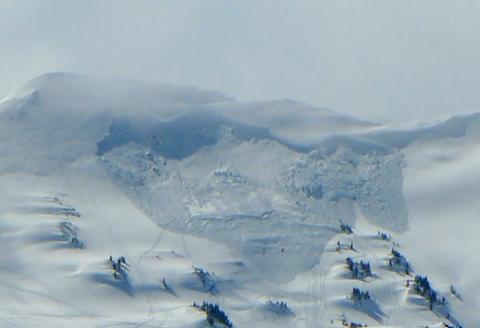
|
Cooke City, 2014-03-08 This massive slide occurred on the noth side Sctoch Bonnet Mountain north of Cooke City. It is uncertain whether this slide was human triggered or a natural, but judging by the tracks it appears to be snowmobile triggered. The crown looks to be close to 1000 ft. wide and over ten feet deep. Photo B. Zevora |

|
Cooke City, 2014-03-08 This slide occurred on a NE facing slope on Mt. Republic south of Town. The avalanche failed naturally and was the result of heavy crossloading from SW winds. Photo B. Fredlund |

|
Bridger Range, 2014-03-08 This natural avalanche was likely triggered by a cornice fall. It broke on a layer of facets that formed in January. The crown was 44 degrees steep, 3-4 feet deep, 150 feet wide and ran 900 feet vertical. It avalanched after the storm ended yesterday morning. Photo: GNFAC |

|
Northern Madison, 2014-03-07 Consistent snow and wind have developed large cornices alonge exposed ridgelines. Cornices are dangerous for a few reasons. When traveling along the top of the ridge they can fail and pull back farther than one might expect. They can also fail naturally making great triggers for the slopes below. Avoiding corniced ridgelines and slopes below cornices is a good idea this time of year. Photo GNFAC |

|
Northern Madison, 2014-03-05 The Big Sky Ski Patrol triggered this large slide during control work. It took place in the upper A-Z Chutes and is a good example of what's possible in the backcountry. Photo BSSP |
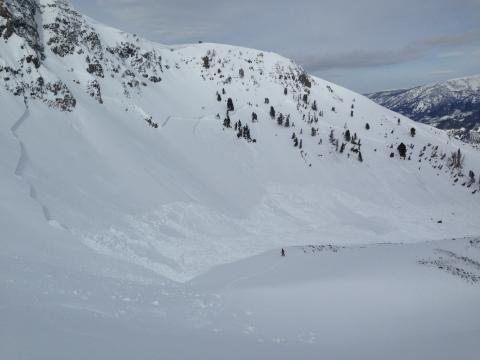
|
Northern Madison, 2014-03-05 This large natural avalanche occurred just outside the northern boundary of Big Sky Resort. It broke close to one thousand feet wide was triggered by a natural cornice fall. The slide occurred on a NE facing slope and failed on the facet layer formed during the January dry spell. It stepped down and broke on facets near the ground on the far right side of the slide. Photo BSSP |

|
Northern Gallatin, 2014-03-05 This recent slide was spotted yesterday (3/4) on a northerly aspect at the head of the Cottonwood drainage just east of Alex Lowe Peak and south of Mt. Blackmore. Photo: B. Vandebos |

|
Northern Gallatin, 2014-03-05 This avalanche was spotted yesterday (3/4) on a SW aspect of Elephant mountain at the head of the Cottonwood drainage behind Mt. Blackmore. Photo: B. Vandenbos |

|
Northern Gallatin, 2014-03-05 This slide was seen yesterday (3/4) on the East face of Mt Blackmore. This slope produced a much larger avalanche in mid-January (see photo). Photo: B. Vandenbos |

|
Cooke City, 2014-03-05 Snowfall in February and early March as pushed SWE totals well above the 30 year median. Graph produced by the NRCS. |

|
Lionhead Range, 2014-03-02 This slide occurred ran full path to the bottom of this gully. Photo: A. Whitmore |

|
Lionhead Range, 2014-03-01 This slide occurred on a NE facing slope around 8,880 ft. above Hebgen Lake. The slide broke 150' wide and ran nearly the entire path - 1,200 vertical feet. It likley failed on a layer of facets 2-3 feet below the surface. Photo A. Whitmore |

|
Cooke City, 2014-03-01 This slide occurred on a south facing slope around 9,500 ft. and was remotely triggered from the bottom of the slope. New snow (18") sitting on top of an ice crust was the recipe that caused this slide. Photo GNFAC |
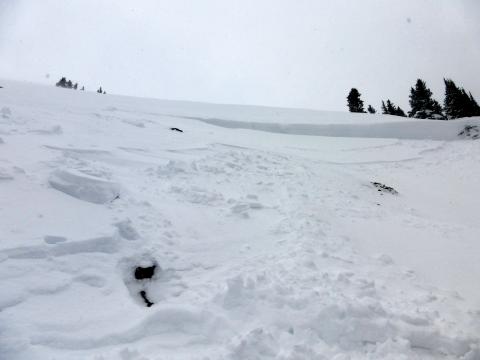
|
Cooke City, 2014-03-01 This slide was triggered on Woody Ridge south of Cooke City. The skier who triggered the slide impacted the weak layer on the lookers left side of the crown where the snowpack is thin. The weak layer collapsed and propagated into a much deeper part of the snowpack creating a large and destructive avalanche. Photo GNFAC |

|
Cooke City, 2014-03-01 This slide was triggerd by a skier on Woody Ridge outside of Cooke City. The slope was WNW facing around 9,800 ft. The slide failed on a layer of facets near the ground. Photo GNFAC |
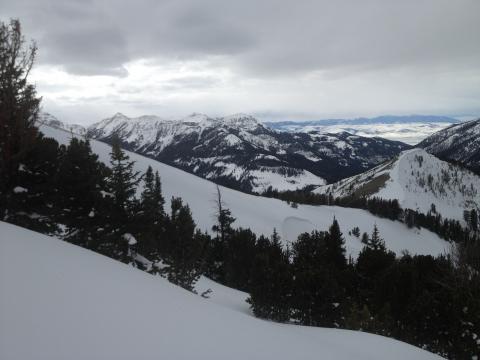
|
Northern Madison, 2014-02-28 This slide was one of two that were triggered on Thursday (2/27) at the same time as skiers approached this slope adjacent to a place on Lone Mountain called "Little Bridger." They broke on a thin layer of facets in the middle of the snowpack (about 3 feet deep). One of the two slides propagated into a large wind drift and broke 6-7 feet deep. Photo: W. Petty |

|
Northern Gallatin, 2014-02-28 Cornices have become very large recently. When they break and fall they can trigger avalanches. The slide just left of center in this photo was triggered by a falling cornice and caused the snowpack to break in two different layers. The good news is that this slide did not propagate much beyond the area where the cornice hit the slope but could be a warning of more avalnches to come with more snowfall. Photo: Barnes |
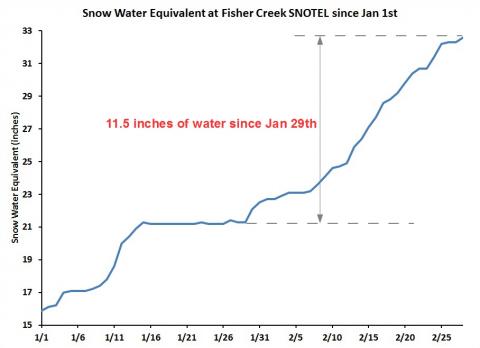
|
Cooke City, 2014-02-28 Since a 2 week dry period in late January, the mountains near Cooke City have received 11.5 inches of snow water equivalent. Some areas north of town may have easily received much more than this amount. |
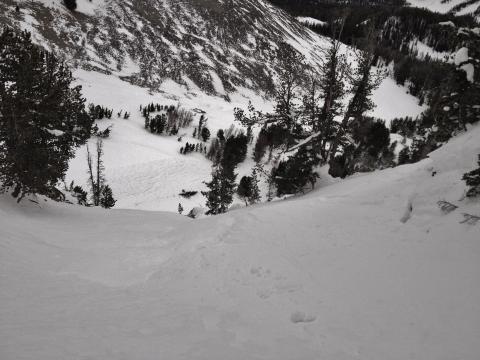
|
Northern Madison, 2014-02-27 This slide was triggered by a snowboarder in this area just below the camera. The debris ran 250 vertical feet below and took out a live tree that can be seen in the debris. This avalanche happened on 2/26. Photo: GNFAC |
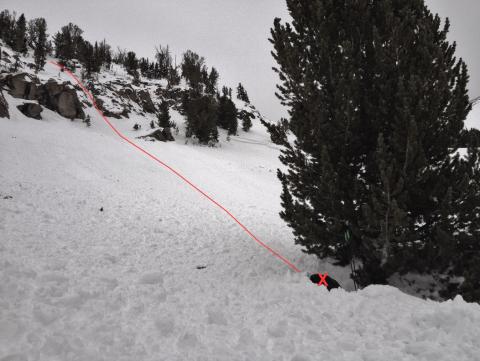
|
Northern Madison, 2014-02-27 The snowboarder was carried and partially buried at the red X. A few feet to the right and he would have been slammed into the tree. About 15 feet to the left and he could have been completely buried as the debris was 6-8 ft deep. This avalanche happened on 2/26. Photo: GNFAC |
